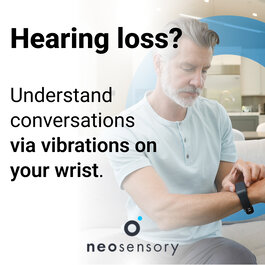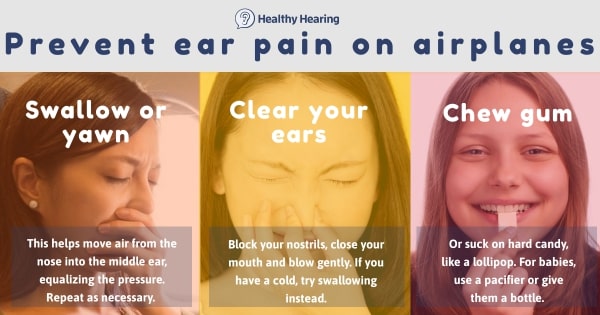|
www.HealthyHearing.com |
What is eustachian tube dysfunction?This common condition leads to ear pain and pressure
Contributed by Madeleine Burry The eustachian tube connects your middle ear to your throat. Its chief job is to equalize ear pressure, but it also allows fluid to drain from the middle ear, which is important if you have a cold. .jpg)
of your throat. It is also known as the auditory tube. When the eustachian tube doesn't open or close properly, it's known as eustachian tube dysfunction (ETD). This can lead to ear pressure, pain, or hearing problems. ETD is a fairly common problem, especially among kids. Types of eustachian tube dysfunctionThere are three main varieties of ETD:
Common ETD symptomsSigns that you’re experiencing eustachian tube dysfunction include:
Who develops eustachian tube dysfunction?It can affect anyone of any age or background, but is more common in children than adults. Children are more prone to middle ear infections, largely due to the anatomy of their eustachian tubes. “Children are still growing and their eustachian tubes are narrower and more horizontal than an adult. This prevents them from draining as effectively,” says Melissa Schnitzspahn, AuD, manager of audiology at The Ohio State University Wexner Medical Center. Causes of eustachian tube dysfunctionThere are many factors that can lead to ETD, and they can be sorted into internal and external causes:
Risk factorsIn some cases, no cause can be found. Factors that may increase your risk of eustachian tube dysfunction include:
What is the treatment?Most cases of ETD will go away without medical treatment. “Usually once the cause of the ETD resolves (ex. the plane lands) the pressure can release,” according to Dr. Sarah Lundstrom, a fellow of the American Academy of Audiology, a member of Florida Academy of Audiology, and audiologist at HearCare Audiology. If it doesn’t go away, she suggests:
When to see a doctorIf the pressure remains in place for several days, or if you’re experiencing a lot of pain, see an ear-nose-throat doctor (ENT), advises Lundstrom. “Possibly untreated ETD can lead to a ruptured eardrum,” she notes. As you can imagine, the treatment for one type of ETD may not be the same as the treatment for another, Schnitzspahn notes. Some of the possible treatments include the following, according to Stanford Medicine:
Bottom line: “If you are experiencing symptoms, you should see a physician to determine the cause and discuss possible treatment options,” says Schnitzspahn. Preventing ear pressure and pain
There are some steps you can take to reduce the chances that you’ll experience eustachian tube dysfunction. “Plan ahead if you know you will be in a situation that causes you ETD or discomfort, like taking a decongestant before flying,” suggests Lundstrom. You can wear specialized ear plugs before you fly (such as EarPlanes), or just make a point of swallowing a lot when the plane descends. It also may help to stay awake during the descent and chew gum or try sucking on a hard candy. You can also stay on top of allergy symptoms or treat GERD or other factors that might be contributing to your ETD. Plus, stay hydrated—drinking lots of water will help keep your mucus thin. Madeleine Burry
|
Featured clinics near me
Hearing Health Solutions from Ohio ENT - Columbus
974 Bethel Rd Ste B
Columbus, OH 43214
Earzlink Hearing Care - Reynoldsburg
7668 Slate Ridge Blvd
Reynoldsburg, OH 43068


Find a clinic
We have more hearing clinic reviews than any other site!



 Madeleine Burry is a Brooklyn-based freelance writer and editor. She's written about health for several online publications, including Women's Health, Prevention, Health, Livestrong and Good Housekeeping. You can follow her on Twitter @lovelanewest.
Madeleine Burry is a Brooklyn-based freelance writer and editor. She's written about health for several online publications, including Women's Health, Prevention, Health, Livestrong and Good Housekeeping. You can follow her on Twitter @lovelanewest.